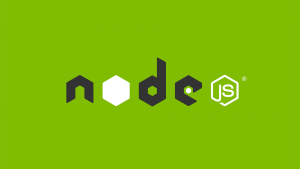Welcome to the exciting world of cloud gaming! This revolutionary technology is changing the way we play video games. Imagine playing the latest high-end games without needing expensive hardware. Sounds too good to be true? Well, it’s not. Thanks to cloud gaming, this is now a reality.
Cloud gaming, also known as gaming-on-demand, is a form of online gaming. It allows direct and on-demand streaming of games onto computers, consoles, and mobile devices. Remote servers do the heavy lifting, so you don’t need a high-end device to play. It’s like Netflix, but for video games.
The benefits of cloud gaming are numerous. For starters, it’s cost-effective. You no longer need to invest in expensive gaming hardware. All you need is a device with an internet connection. Plus, you can play your favorite games anywhere, anytime.
However, like any technology, cloud gaming has its challenges. Latency, or the delay between your action and the game’s response, can be problematic. But don’t worry; companies are working tirelessly to solve this issue.
Cloud gaming is not just a trend; it’s the future of the gaming industry. It’s transforming everything from game development to distribution. To give you a clearer picture, we’ll look at some successful examples of cloud gaming platforms.
So, are you ready to dive into the fascinating world of cloud gaming? Let’s get started!
Understanding Cloud Gaming
Cloud gaming, a term that’s been gaining traction in recent years, is a transformative technology in the gaming industry. But what exactly is it, and how does it work? Let’s dive into the fascinating world of cloud gaming.
At its core, cloud gaming, also known as gaming-on-demand, is a form of online gaming. It allows direct and on-demand streaming of games onto computers, consoles, and even mobile devices. The key to cloud gaming lies in its use of remote servers. These servers do the heavy lifting, so your device doesn’t need to. This is similar to how you stream movies or music from services like Netflix or Spotify.
Difference Between Traditional Gaming And Cloud Gaming
Now, you might be wondering, how does this differ from traditional gaming? In traditional gaming, games are installed and run locally on your device, be it a console or a PC. The performance and graphical quality of the games depend heavily on the capabilities of your device. This means that to play the latest games at the highest settings, you need a device with powerful hardware.
On the other hand, with cloud gaming, you don’t need a high-end device to play the latest games. Since the games are processed and rendered on remote servers, you can play high-quality games on devices with limited processing power. This is a game-changer for people who can’t afford or don’t want to invest in expensive gaming hardware.
However, it’s important to note that while cloud gaming has its advantages, it also has its challenges. One of the main challenges is latency, which is the delay between your action and the game’s response. This can be a problem, especially in fast-paced games where every millisecond counts. But rest assured, companies are working hard to solve this issue and improve the cloud gaming experience.
It therefore should be noted that cloud gaming is a revolutionary technology that’s changing the landscape of the gaming industry. It offers a new way to play games that’s more accessible and cost-effective than traditional gaming. As the technology continues to improve, we can expect cloud gaming to become an increasingly popular choice for gamers around the world. So, whether you’re a casual gamer or a hardcore enthusiast, cloud gaming has something to offer you. Welcome to the future of gaming!
The Benefits of Cloud Gaming
Cloud gaming is a game-changer in the world of video games, and it’s easy to see why. It offers numerous benefits that make gaming more accessible and enjoyable for everyone. Let’s delve into some of these advantages.
Cloud Gaming Is Incredibly Accessible
Firstly, cloud gaming is incredibly accessible. With traditional gaming, you need a console or a high-end PC to play games. This can be a significant barrier for many people. However, with cloud gaming, all you need is a device with an internet connection. This means you can play games on your phone, tablet, or even your old laptop. You can play anywhere, anytime, as long as you have internet access.
Cloud Gaming Is Cost-Effective
Secondly, cloud gaming is cost-effective. Gaming hardware can be expensive, and it can become obsolete quickly as technology advances. With cloud gaming, you don’t need to worry about this. You don’t need to invest in expensive hardware or upgrade your device to play the latest games. Instead, you can enjoy high-quality gaming with a low monthly subscription fee.
Ability To Play High-End Games
Lastly, one of the most impressive benefits of cloud gaming is the ability to play high-end games on low-end devices. Since the games are processed and rendered on remote servers, your device’s capabilities don’t limit you. This means you can play the latest AAA games at the highest settings, even on devices with limited processing power.
It should be noted that cloud gaming offers numerous benefits that make it an attractive option for gamers. Its accessibility, cost-effectiveness, and the ability to play high-end games on low-end devices are just a few of the reasons why cloud gaming is the future of the gaming industry. So, whether you’re a casual gamer or a hardcore enthusiast, cloud gaming has something to offer you. Welcome to the future of gaming!
Challenges and Solutions
Cloud gaming, while revolutionary, is not without its challenges. The most significant of these is latency, which is the delay between a user’s actions and the game’s response to those actions. This can be particularly problematic in fast-paced multiplayer online games that require quick thinking and precision.
Latency In Cloud Gaming
Latency in cloud gaming is influenced by several factors, including the proximity of physical servers, the power and architecture of the hardware, the software algorithms, scalable resources, and high-speed protocols. The further away the data center is geographically, the higher the latency, as data has to pass from router to router until it reaches its final destination.
Access To High-Speed Internet
Another challenge is the availability of high-speed internet. A recent report found that roughly 31% of households in the United States lack any kind of broadband access. This is a significant barrier to the adoption of cloud gaming, as a fast and consistent internet connection is crucial for reducing latency to ultra-low levels.
Despite these challenges, companies are working hard to improve the cloud gaming experience. One solution to the latency issue is to use wired networks instead of wireless ones. Simply running a standard Ethernet cable from your Wi-Fi router to your device can significantly reduce latency. If this isn’t possible, there are still plenty of ways to tune your Wi-Fi.
Another solution is to use the latest technologies and standards with your network connections. For example, 5G technology can allow for improved range, speed, and performance. This can be particularly beneficial for those who are restricted to mobile internet.
While cloud gaming faces significant challenges, particularly in terms of latency and the availability of high-speed internet, solutions are being developed to overcome these obstacles. As the technology continues to evolve, we can expect the cloud gaming experience to become increasingly seamless and enjoyable.
Impact on the Gaming Industry
Cloud gaming is reshaping the gaming industry in profound ways, from game development to distribution. Let’s delve into how this revolutionary technology is changing the landscape of gaming.
Firstly, cloud gaming is democratizing access to high-quality games. In the past, playing the latest games required expensive hardware. This was a significant barrier for many people. However, with cloud gaming, anyone with an internet connection can play high-end games. This opens up new opportunities for developers and publishers to reach a wider audience, driving potential increases in game popularity and revenue.
Secondly, cloud gaming is transforming game development. With traditional gaming, developers had to consider the limitations of the hardware when designing games. However, with cloud gaming, these limitations are largely removed. This allows developers to push the boundaries of what’s possible, creating richer and more immersive gaming experiences.
Thirdly, cloud gaming is changing the way games are distributed. In the past, games were sold on physical discs or downloaded digitally. However, with cloud gaming, games are streamed directly to the player’s device. This eliminates the need for physical discs and reduces the time it takes for players to start playing.
In this regard, it’s worth noting that cloud gaming is a transformative force in the gaming industry. It’s democratizing access to games, transforming game development, and changing the way games are distributed. As the technology continues to evolve, we can expect these trends to continue, further reshaping the landscape of gaming.
Case Studies:
Cloud gaming platforms have been making waves in the gaming industry, with several successful examples leading the charge. Let’s take a closer look at some of these platforms and what we can learn from them.
Cloud Gaming Platforms
Xbox Game Pass Ultimate: Microsoft’s Xbox Game Pass Ultimate is considered one of the best cloud gaming services overall. It offers a vast library of games that can be streamed directly to various devices. What sets it apart is its integration with Xbox’s ecosystem, providing a seamless gaming experience across different platforms.
Nvidia GeForce Now: Nvidia’s GeForce Now is known for its impressive performance and low latency. It allows users to play their existing library of games, including titles from Steam, Epic Games Store, and more. This approach gives gamers the freedom to play their favorite games without being tied to a specific platform.
PlayStation Now: Sony’s PlayStation Now service offers a vast library of PlayStation games that can be streamed to PS4, PS5, and PC. It also includes classic titles, making it a great choice for gamers who want to revisit older games.
Shadow: Shadow is a unique cloud gaming service that provides users with a full Windows 10 PC experience. This means users can install and play any PC game, offering a level of flexibility that most other cloud gaming services don’t.
Amazon Luna: Amazon Luna is a relatively new entrant in the cloud gaming space. It offers a channel-based subscription model, where users subscribe to different channels to access a variety of games.
These platforms show that successful cloud gaming services need to offer a wide variety of games, low latency, and flexibility in terms of the devices they support. They also highlight the importance of integrating with existing gaming ecosystems to provide a seamless gaming experience. As the technology continues to evolve, we can expect to see even more innovation in this space.
The Future of Cloud Gaming
The future of cloud gaming is a topic of great interest, with many speculating on the trends in technology and consumer behavior that will shape its trajectory.
Cloud gaming is anticipated to be the future of the gaming industry. The cloud service plays a key role in delivering a smooth gaming experience to customers’ entire devices without additional hardware configuration. The growing desire for a low-latency, inventive, and immersive gaming experience will fuel the market growth rate.
Cloud Gaming Prospects
Developments in advanced technologies such as edge computing and 5G are expected to have a positive impact on the future of cloud gaming, which would also help in avoiding latency and disruption. The growth and success of the cloud gaming industry is determined by the capability of companies to attract new players and the availability of games based on different genres to the end users.
In 2024, the gaming industry will continue its blockbuster growth, tapping into trends in streaming, AI, and AR and VR—all built on cloud computing. With more than 2.5 billion gamers worldwide, the opportunity and the impact may be considerable.
Smartphones, fast Wi-Fi, and faster networks have changed consumer attitudes on accessing and owning music, film, and now games from physical to digital. As digital sales and distribution of games continue to grow, publishers need to prioritize digital distribution when setting their marketing strategy.
The rise in the use of games as a means to socialize has been accelerated during the COVID-19 lockdown measures. Virtual spaces within large player base games are also being used as gathering points where players socialize and experience a live event.
In this regard, the future of cloud gaming looks promising, with advancements in technology and shifts in consumer behavior driving its growth. As the technology continues to evolve, we can expect to see even more innovation in this space, further reshaping the landscape of gaming.
Takeaways
Cloud gaming is a transformative force in the gaming industry. It’s democratizing access to games, transforming game development, and changing the way games are distributed. As the technology continues to evolve, we can expect these trends to continue, further reshaping the landscape of gaming.
While revolutionary, Cloud gaming is not without its challenges. The most significant of these is latency, which is the delay between a user’s actions and the game’s response to those actions. This can be particularly problematic in fast-paced multiplayer online games that require quick thinking and precision. But rest assured, companies are working hard to solve this issue and improve the cloud gaming experience.
The future of cloud gaming looks promising, with advancements in technology and shifts in consumer behavior driving its growth. As the technology continues to evolve, we can expect to see even more innovation in this space, further reshaping the landscape of gaming.









